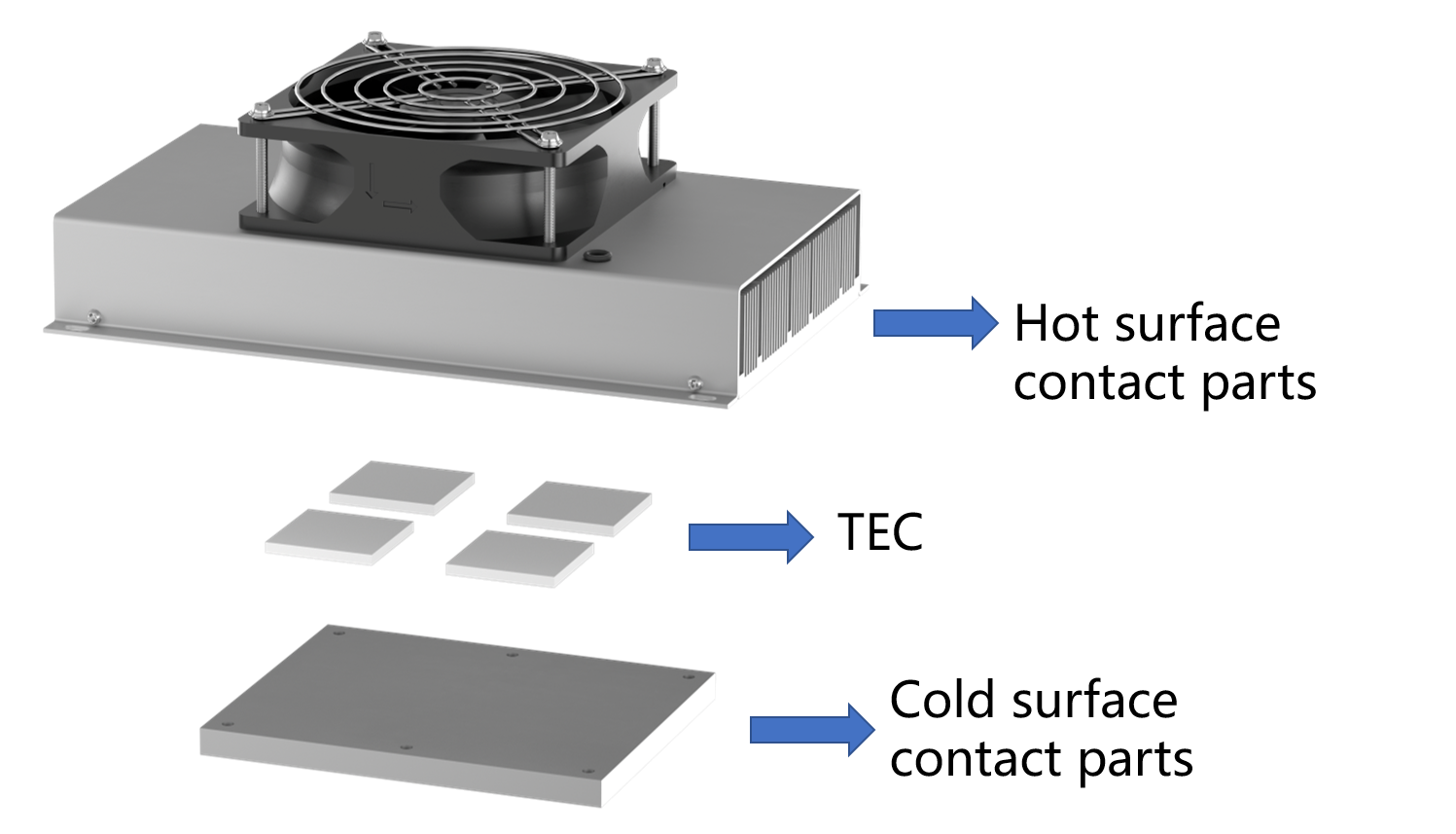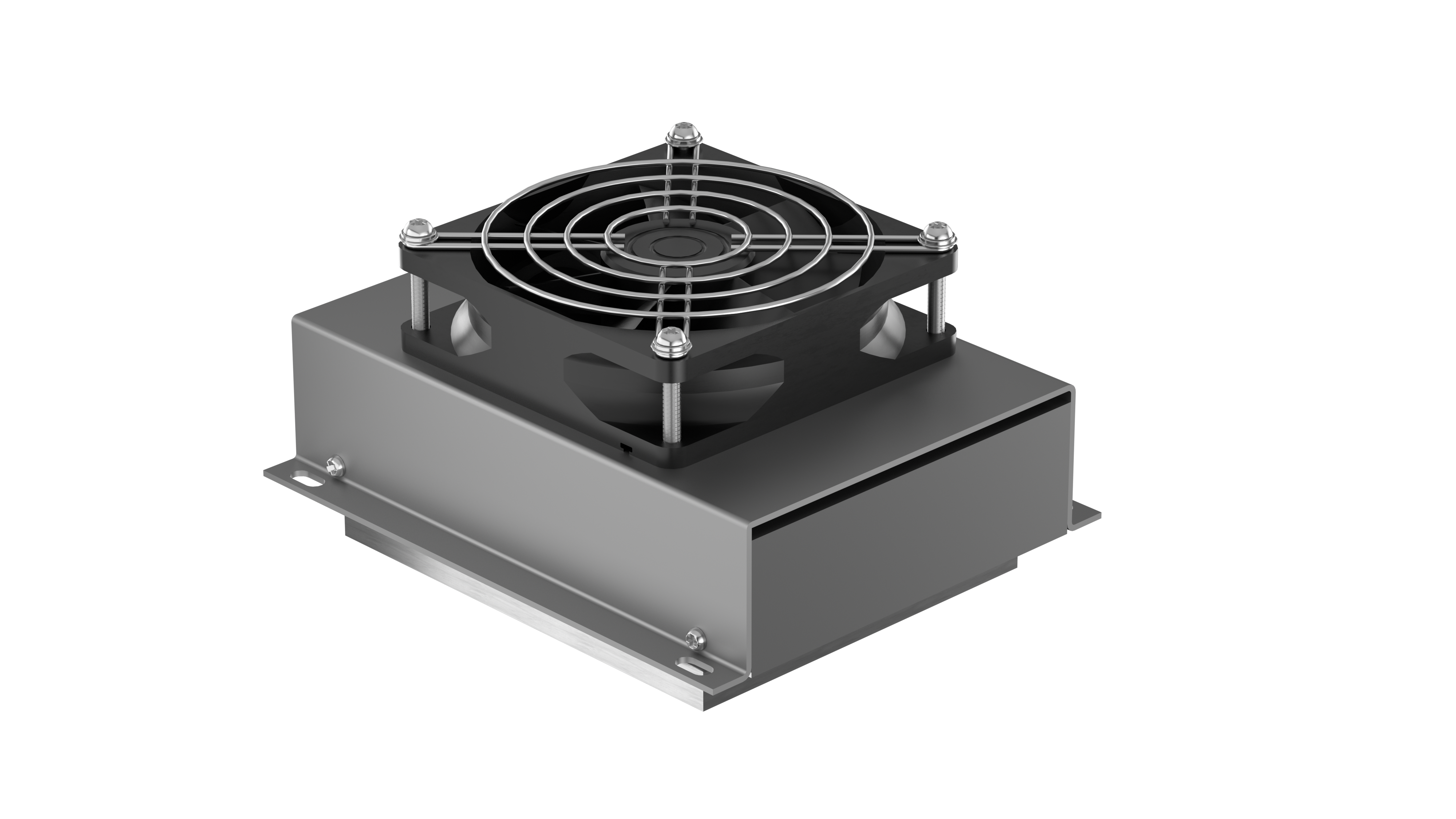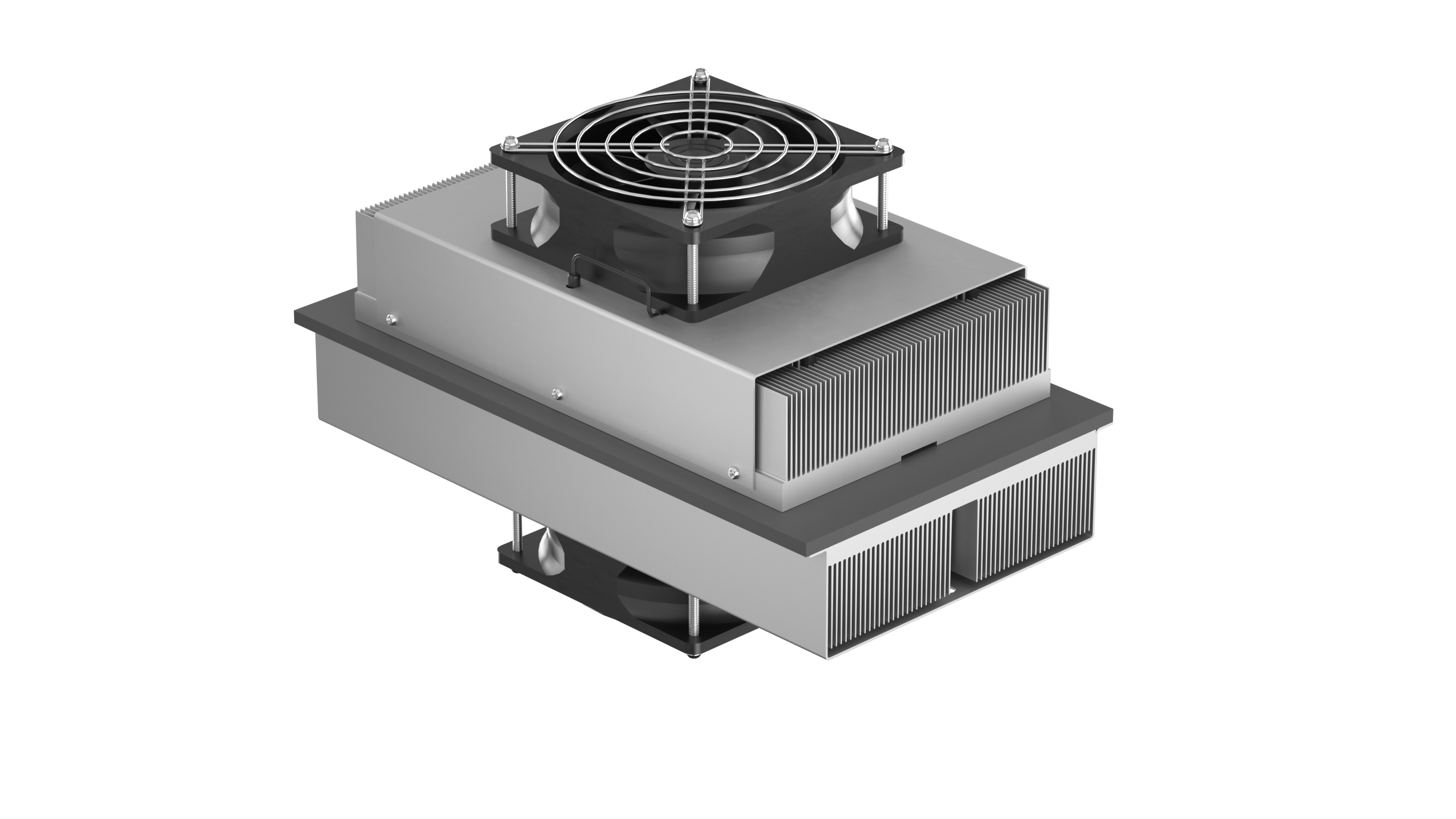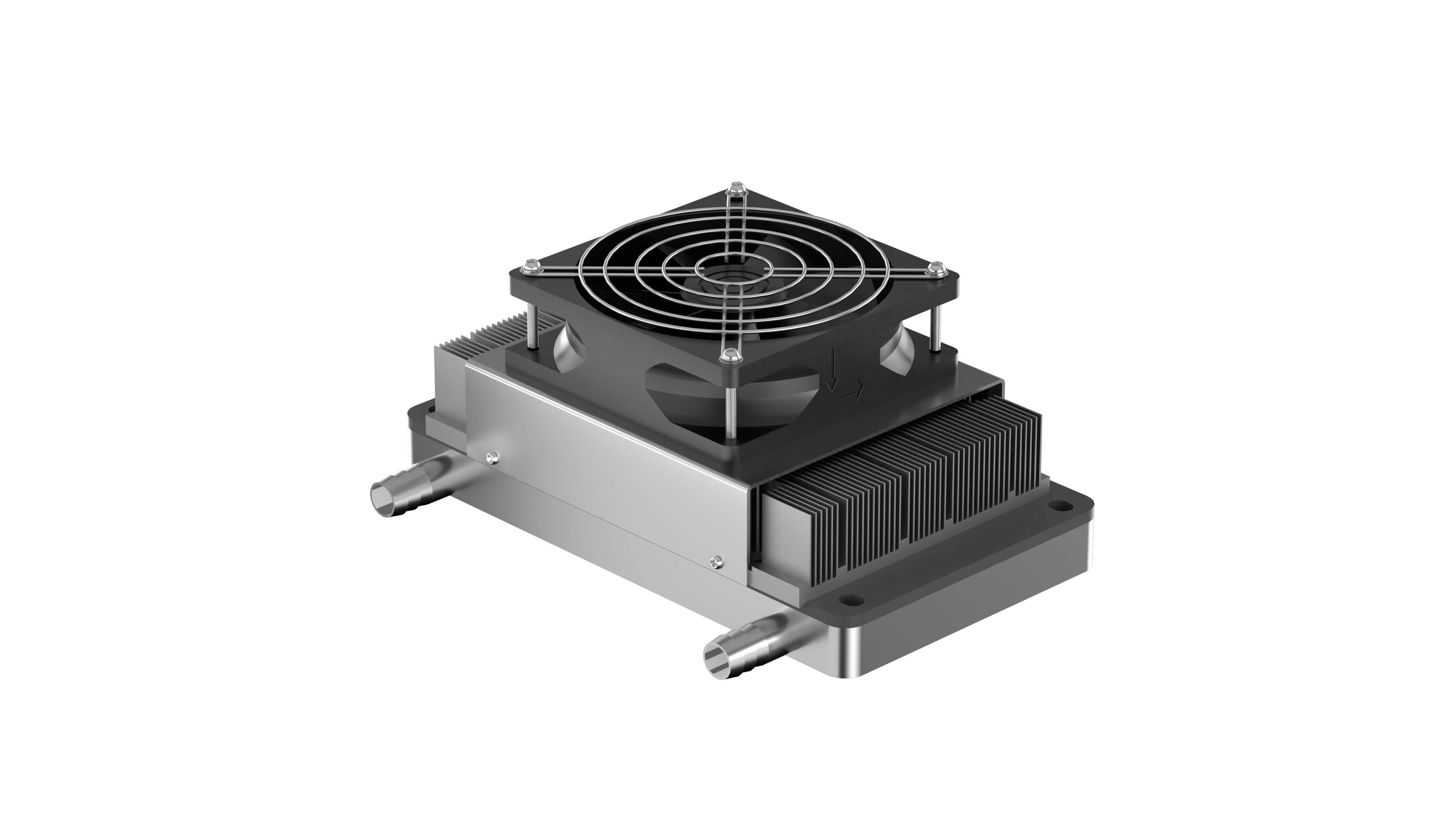What is a semiconductor refrigeration module? This article will give you a quick introduction!
1. What is a TEC cooling module?
The TEC cooling module is a solid-state refrigeration device whose core component is a semiconductor refrigeration element (TEC). The working principle of the cooling module is based on the Peltier effect: through direct current drive, heat is transferred from the cold end to the hot end, achieving a cooling effect.

TEC refrigeration modules usually consist of the following three parts:
Cold surface contact parts: direct contact with temperature control object
Semiconductor Refrigeration Chip: Core Refrigeration Component
Hot surface contact components: responsible for system heat dissipation
2. Commonly used refrigeration module series
TEC cooling modules are categorized into various series, including DA, DN, AA, NN, DL, AL, DD, NA, and LL, depending on the contact method between the hot and cold surfaces. DA, AA, DL, AL, and LL are the five most widely used series, suitable for various temperature control scenarios and heat dissipation requirements.

DA Series: Uses air cooling and is primarily used for contact cooling of solid objects, such as chips and liquids on carriers. Its characteristic is that it directly contacts the temperature-controlled object through aluminum metal parts, enabling rapid heat transfer and achieving high rates of temperature increase and decrease.

DL Series: Compared to the DA Series modules (air cooling), the DL Series modules (water cooling) typically achieve higher heating and cooling rates, while also achieving a greater temperature differential between the hot and cold surfaces (for example, using 6L/min of 25°C cooling water, the cold surface aluminum block temperature can reach as low as -25°C). If you require higher temperature control speed and temperature differential, the DL Series water cooling module may be a better choice.

AA Series: Featuring a dual-fan design, it's ideal for applications requiring overall temperature control, such as car refrigerators, cold storage boxes, constant-temperature cosmetic cases, and small computer rooms. The fan and duct work together to create air flow, achieving uniform temperature control and ensuring an ideal ambient temperature.

AL Series: When equipment requires high heat dissipation and installation space is limited, the AL Series modules are the ideal choice. They utilize water cooling, which not only outperforms air cooling but also significantly reduces size, making them easier to embed into various precision equipment.

LL Series: Designed specifically for liquid temperature control, with a maximum cooling capacity of up to 3000W, it meets high-power cooling needs. It can be directly connected to service water or domestic water, eliminating the need for complex cooling systems and offering advantages such as easy installation and simplified maintenance. This series of modules is widely used in industrial temperature control platforms, medical equipment, and other fields, and is an ideal alternative to 1-1.5 HP compressors.
3. TEC Module Selection - Refrigeration Capacity Evaluation
When using a TEC cooling module, evaluating cooling capacity is crucial. The target cooling capacity, Q C, depends not only on the heat generated by the heat source itself (Q active ) but also on the heat exchange between the heat source and the surrounding environment (Q passive ). Understanding the Q C calculation logic is the first step to achieving precise temperature control. The following formula is used:
Q C = Q Active + Q Passive (Q Passive 1 + Q Passive 2 )
Qactive = UI (voltage x current )
Qpassive1 =CM∆t ( heat capacity x mass x temperature difference)
Qpassive2 = h c A∆t (heat transfer coefficient x surface area x temperature difference)
*Q Passive 1 : The heat absorbed or released by the heat source itself due to temperature changes, which is mainly related to the heat capacity of the material.
*Q Passive 2 : Heat exchange between the heat source and the surrounding environment due to temperature differences, including air convection, heat conduction, radiation, etc.

After determining the target cooling capacity, if the customer has provided the structural dimensions and heat dissipation method, we can further calculate the thermal resistance between the hot and cold surfaces, and complete the selection and matching of the TEC module based on the required cooling capacity, operating voltage, and current parameters.
4. TEC Module Selection - Performance Coefficient Evaluation
In addition, since the core component of the TEC cooling module is the semiconductor cooling chip, its performance coefficient COP not only depends on the material and manufacturing process, but is also affected by many other factors: cooling method (air cooling/water cooling, etc.), TEC layout, thermal insulation design, selection of contact interface materials, installation method, etc.
① Air cooling: COP is usually between 0 and 1.0;
② Water cooling: COP can be increased to 1.2;
③ When the temperature difference between the hot and cold surfaces is small and the voltage can be flexibly adjusted: the COP of the water cooling module can reach above 1.5;
④ When the temperature has reached the set value: the system only needs a small amount of power consumption to control the temperature, and the COP is significantly improved.
*COP represents the amount of cooling or heating a device can provide per unit of energy consumed. A higher COP value indicates a more efficient device, meaning it can provide more cooling capacity for the same amount of electricity consumed.
Based on the above situations, we need to select the appropriate TEC module type, cooling method and control strategy according to the actual application requirements to achieve more efficient, energy-saving and stable temperature control effects.



